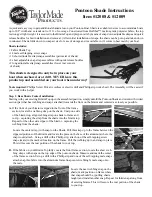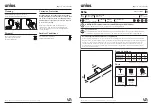
Lumenis
®
Pulse
TM
50H / 100H Laser Systems
Protecting Non-Target Tissues
UM-20006520DE, Rev. A
Page 17
Protecting Non-Target Tissues
WARNING:
• When using an optical fiber, always inspect it to ensure that it has not
been kinked, punctured, fractured, or otherwise damaged. The optical
fiber may be damaged if stepped on, pulled, left lying in a vulnerable
position, kinked, or tightly coiled. Do not clamp the optical fiber with
a hemostat or other instruments. If sterile tape is used, always remove
the tape before lifting the optical fiber. A damaged optical fiber may
cause accidental laser exposure or injury to the treatment room
personnel or patient, and/or fire in the treatment room.
• Never deliver the treatment beam to the target tissue if the aiming
beam integrity has not been verified; the optical fiber may be
damaged. A damaged optical fiber may cause accidental laser
exposure to the treatment room personnel or patient, and/or fire in the
treatment room.
• Except during actual treatment, the laser system must always be in
Standby
mode. Maintaining the laser system in
Standby
mode
prevents accidental laser exposure if the footswitch is inadvertently
pressed.
CAUTION:
• To prevent accidental laser discharge, always make sure that the
footswitch is not being operated while connecting the optical fiber.
• Never place hands or other objects in the path of the laser beam.
Severe burns could occur.
• Only the person directing the aim of the laser beam should have access
to the laser system footswitch. Use caution pressing the laser system
footswitch when it is in proximity to footswitches for other equipment.
Verify the footswitch pressed is the correct one in order to avoid
accidental laser exposure.
• Never discharge the laser system without a target to absorb it and
without consideration given to what lies behind the target. Place
energy-absorbing material behind the target tissue when aiming the
laser at an oblique target.
















































